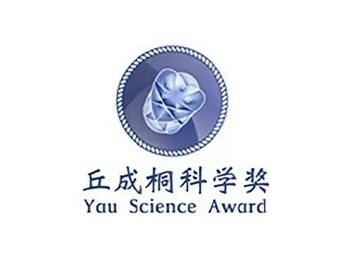2024 Yau Science Award North American Semifinalists Announced
The S.-T. Yau High School Science Award, established in 2008 by mathematics master Mr. S.-T. Yau, is a science innovation award for high school students and the only global research competition specifically for Chinese-speaking students. The Yau Science Award focuses on evaluating participants through "scientific research papers" and "professional academic defenses," encouraging innovation and teamwork over standardized testing and answers, with competition entries submitted in the form of research papers.
Since its inception fifteen years ago as a single Mathematics Award, the S.-T. Yau High School Science Award has expanded to include categories for Mathematics, Physics, Chemistry, Biology, Computer Science, and Economics and Financial Modeling, achieving significant international influence.
Is the Yau Science Award prestigious?
So far, the Yau Science Award has been successfully held for 16 sessions, with more than 2,000 middle schools and more than 12,000 teams participating in the competition, covering more than 30 provinces, municipalities and autonomous regions in China and many overseas countries such as the United States and Singapore. Well-known professors and scientists from all over the world serve as judges or consultants for the award.
About half of the award-winning young students have successively entered famous Chinese and foreign universities such as Tsinghua University, Peking University, Harvard, MIT, Yale and Princeton, and many of them have entered universities to work and embark on the road of scientific research.
The Yau Science Award is divided into three main regional divisions
Within China, there are Southern, Northern, and Eastern (for Mathematics) divisions.
The registration and submission of research papers for the 2024 S.-T. Yau High School Science Award (Mainland China Region) were completed in September. This year, a total of 2,139 teams registered, submitting 969 papers. After a month-long, three-round evaluation by the organizing committees in each sub-region, the semifinalist list for the Yau Science Award in Mainland China has been announced.
According to the timeline on the Yau Science Award’s official website, the schedule for students in the Mainland China region is as follows:
November 2/3/4: Mainland China Semifinals (interview and defense)
November 4 - November 11: Announcement of the finalists for the Global Finals and publication of research reports
December 7 - December 8: Global Finals and Award Ceremony, Science Forum
2.Asian Division
This division includes regions such as Hong Kong, Macau, Taiwan, and other Asian countries with Chinese-speaking students.
This division is for Chinese-speaking high school students from countries outside Asia.
On November 3, the semifinalist list for each subject in the North American Division of the Yau Science Award was announced. In this round, 7 teams advanced in Mathematics, 6 in Physics, 6 in Chemistry, 7 in Biology, 7 in Computer Science, and 5 in Economics.
list of semifinalists for the 2024 Yau Science Award North American
Yau Science Award Semifinalists - Mathematics
1. Student: Sargam Mondal
School: Edison Academy Magnet School
Project: Exact Factorizations of G-Crossed Braided Fusion Categories
2. Student: Eric Yee
School: Henry M. Jackson High School
Project: Describing Hilbert series of quasi-invariants in characteristics $p\leq n$
3. Student: Susie Lu
School: Stanford Online High School
Project: Network Topology Design via Minimizing Laplacian Energy
4. Student: Jiwu Jang
School: Lexington High School
Project: Vertex functions of type D Nakajima quiver varieties
5. Student: Neil Krishnan
School: Harker Upper School
Project: On the connectivity of friends-and-strangers graphs
6. Student: Isaac Chen
School: Princeton Day School
Project: On the Crossing Profile of Rectilinear Drawings of Complete Graph
7. Student: Sidarth Erat, Shihan Kanungo
School: La Jolla High School, Henry M. Gunn High School
Project: Mixed Tensor Products, Capelli Berezinians, and Newton's Formula for gl(m|n)
Yau Science Award Semifinalist - Physics
1. Student: Zhi Huang
School: Kent School
Project: Visualization of particulate matters in air using lensless microscopy
2. Student: Maximilian Kopp
School: Germantown Academy
Project: Analysis of the Polarized Photo Response of GeSe and Its Application in Non-invasive Blood Glucose Monitoring
3. Student: Qianxun Zhao
School: Phillips Academy Andover
Project: Deformation Analysis and Functional Designs of Kresling Origami Structures
4. Student: Zitong Zhou
School: Culver Academies
Project: Self-Shape Sensing Soft Pneumatic Grasper Based on Piecewise Liquid Metal Sensor and Piecewise Variational Curvature Model
5. Student: Boyu Liu
School: Homeschool, affiliated to Bayard Rustin High School, West Chester Area School District
Project: Novel Source Localization Method for Hazardous Gas Leaks in Chemical Plants: Integrating Computational Fluid Dynamics, Sensor Placement Optimization, and Deep Learning
6. Student: Valencia Zhang
School: Phillips Academy Andover
Project: Investigating physical conditions and critical factors across the center of the galaxy M82
Yau Science Award Semifinalist List - Chemistry
1. Student: Aiden Chen, Xi Nan Jiao
School: Old Scona Academic
Project: Computational Screening and Design of Metal-Organic Frameworks for CO2 Separation from Flue Gas
2. Student: Christopher Jonee Li
School: St George's School (BC)
Project: Enhancing Li-Mg selectivity via MOFs based membrane
3. Student: Victor Li
School: University High School
Project: Allo-DiffHopping: A Pocket-Ligand Interactions Conditional E(3) Equivariant Diffusion Model for Scaffold Hopping
4. Student: Qiuen Yu
School: The Lawrenceville School
Project: How Soil pH Shapes PFAS Uptake in Plants: Exploring Microbial Interactions and the Hidden Link to the Phosphorus Cycle
5. Student: ZIYI FENG
School: The Bullis School
Project: Preparation of Chitosan-Based Nanocomposite Films and Their Effectiveness on Egg Coating for Preservation and Sterilization
6. Student: Cindy Cheng
School: Laurel Heights Secondary School
Project: Creating Soft Microrobotic Carriers for Stem Cell Delivery: Materials Chemistry and Fabrication Method
Yau Science Award Semifinalists - Biology
1. Student: Junrui Jonathan Hai
School: Princeton International School of Mathematics and Science Project: Rutin attenuates distracts spinal cord injury through inhibiting inflammation by downregulating P38 MAPK/NF-κB/STAT3 pathway
- Student: Andrew Liang
School: The Harker School
Project: An Intelligent Bee Health Assessment System with Cross-Attention Multimodal Integration of Visual and Audio Data
- Student: Yifan Evan Ding
School: Boston Latin School
Project: Engineering of a compact gene switch for temporal control of CRISPR gene editing
- Student: Xinran Ma
School: The Spence School
Project: Beyond Conventional Therapy: Synthesis of Multi-functional Nanoparticles for Rheumatoid Arthritis Therapy
- Student: Ethan Liu
School: Phillips Exeter Academy
Project: Examining Differentially Expressed Genes Associated with the Pathogenesis of Alzheimer’s Disease
- Student: Jamie Cheng
School: Green Level High School
Project: AllerGel: Inhalable Bioadhesive Microspheres to Prevent Particulate Matter-Induced CRDs and CRS
7. Student: Sindhu Vemulapalli
School: Vista del Lago High School
Project: Discovery of Small Molecule TLR4 Inhibitors as Potential Therapy for Alzheimer’s Disease
Yau Science Award Semifinalists - Computer Science
1. Student: Xiangzhou Sun
School: The Webb Schools
Project: GazeLink: A Multi-language Low-cost Mobile Eye-gesture Communication System with Large Language Models for People with Amyotrophic Lateral Sclerosis
2. Student: Jiarui Dong
School: Ecole Jeannine Manuel
Project: SignifAI: French Sign Language Translation based on Deep Learning and Large Language Models
3. Student: Haorun Li
School: Horace Mann School
Project: Drug-Target Interaction Prediction via Deep Multimodal Graph and Structural Learning
4. Student: Zijian Yu
School: Blair Academy
Project: Decision Focused Modeling-Based Predictive Control
5. Student: Adrita Samanta
School: Greater Commonwealth Virtual School
Project: Inference of Cell-Cell Communication to Understand the Molecular Mechanisms of Alzheimer’s Disease
6. Student: William Zhao
School: Dougherty Valley High School
Project: Stack-sorting with stacks avoiding vincular patterns
7. Student: Alejandro Mayorga, Alexander Yuan
School: Danbury Math Academy
Project: CTRQNets & LQNets: Continuous Time Recurrent and Liquid Quantum Neural Networks
Yau Science Award Semifinalist List - Economic and Financial Modeling
1. Student: Elisa Chen
School: Cranbrook Upper School
Project: Modeling Homophily on Information Diffusion Between Groups2. Student: Karen Yang
School: Palo Alto High School
Project: How Students Fare Mentally: Single- vs. Multi-routes College Admissions
3. Student: Ziwen Yin
School: Kingswood Oxford High School
Project: Modeling Optimal Control of Carbon Mission Reduction with Shandong, Hubei, Shaanxi as Cases
4. Student: Yuexin Jiang
School: Eastside Preparatory School
Project: The Impact of a Unified Green Badge Policy on the Ecommerce Platform
5. Student: Meichun Yan
School: The Study
Project: Dynamic Two-Sided Market Competition: Bottleneck and Solution
The North American Division semifinals will be held on November 16-17, 2024, at Brandeis University.
This year, a noticeable trend in the Yau Science Award North American semifinalist list is the occurrence of cross-school teams, which might surprise some participants. The competition rules typically require teams to be composed of students from the same school. So, how did these cross-school teams enter?
These cross-school teams mostly consist of students who participated in the MIT PRIMES program, an academic project officially organized by MIT. This program is the only avenue that allows cross-school teams to enter the Yau Science Award. This year, students from MIT PRIMES can be seen among the semifinalists in the Mathematics, Biology, and Computer Science categories.
Apart from the cross-school advantage, MIT PRIMES itself is a prestigious and competitive academic program. Over 40% of its participants are admitted to MIT each year, and around 80% of program graduates receive offers from Ivy League schools.
Another option——The International Science and Engineering Fair
The Yau Science Award is a highly demanding competition that requires consistent weekly effort from students to achieve satisfying results. With the academic workload in high school, insufficient preparation time can disrupt the balance between school and research projects. If you missed this year's Yau Science Award, don’t miss out on the Regeneron ISEF, another internationally recognized research competition with a high acceptance rate by top U.S. universities!
Embark, an institution focused on youth innovation competitions, has trained over 50 students who advanced to the ISEF finals over the past three years. Embark scholars have also achieved the unique distinction of naming minor planets after themselves for three consecutive years. Get more information here.






